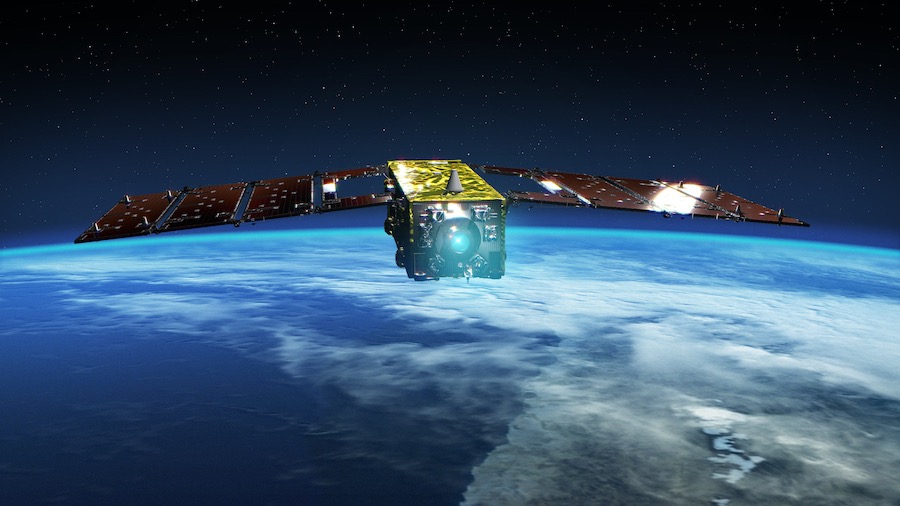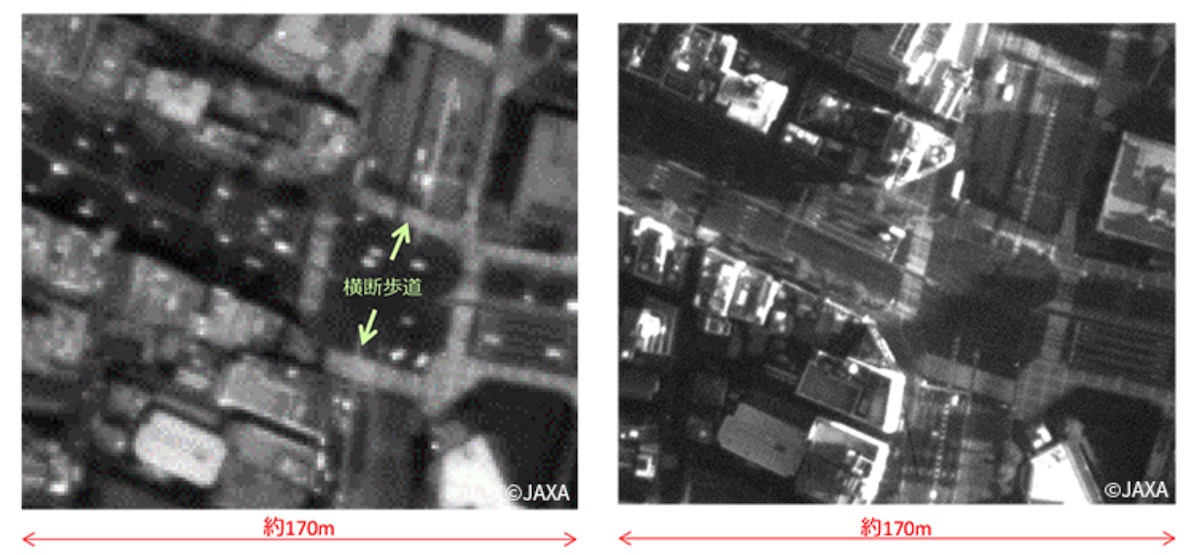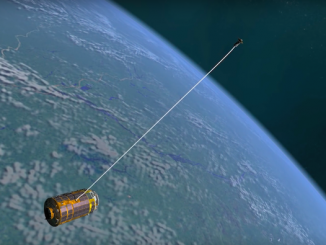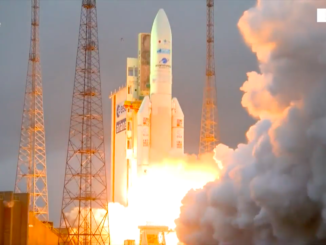
An experimental Japanese satellite has ended its mission after proving it could operate at super-low altitudes, testing an Earth-imaging camera and using ion propulsion to fight against aerodynamic drag at an altitude of 112 miles (181 kilometers).
The Japan Aerospace Exploration Agency’s Tsubame satellite, named for the Japanese word for barn swallow, re-entered the atmosphere Oct. 2 after a nearly three-year mission.
Tsubame, also known as the Super Low Altitude Test Satellite, demonstrated controlled flight in an unusually low orbit, skimming through the rarefied layers of the upper atmosphere where aerodynamic drag typically causes spacecraft to quickly drop out of orbit and burn up.
JAXA’s Tsubame satellite carried an ion thruster, powered by electricity and fueled by xenon gas, to counteract the effect of atmospheric drag. The spacecraft also had an on-board camera to demonstrate the capability to collect high-resolution images of cities and landforms from an altitude as low as 112 miles.

With some exceptions, most Earth-imaging satellites typically fly at altitudes between 300 and 400 miles (500-650 kilometers).
Built by Mitsubishi Electric Corp., Tsubame launched aboard an H-2A rocket in December 2017 into an elliptical, or egg-shaped, orbit with a low point around 280 miles (450 kilometers) above Earth, then maneuvered into a 243-mile-high (392-kilometer) orbit in early 2018. Ground controllers allowed aerodynamic drag to gradually lower Tsubame’s orbit to an altitude of 168 miles (271 kilometers).
At that altitude, Tsubame activated its ion engine to maintain its orbit for one month. Then Tsubame switched off the xenon thruster to allow the spacecraft to drop into lower orbits at 155 miles (250 kilometers), 149 miles (240 kilometers) and 142 miles (230 kilometers), stopping to maintain each altitude for around one week using the ion engine.
Tsubame used its low-thrust ion engine to hold altitude at around 134 miles (217 kilometers) for approximately one month, then lowered its orbit to 112 miles (181 kilometers) in September for one week, again maintaining altitude using its xenon thruster.
The satellite then stabilized its orbit at 104 miles (167 kilometers) for several days. At that altitude, Tsubame had to use its liquid-fueled higher-thrust rocket jets to in conjunction with the ion engine to counteract drag.
The satellite re-entered the atmosphere earlier this month after completing its experiments, JAXA said.
Future satellites operating in such low orbits could offer several advantages to developers, including reduced costs for their imaging instruments and launch services.
A smaller camera on a low-altitude satellite could capture the same quality of images as a more powerful camera on a spacecraft in a higher orbit. An Earth-imaging satellite launched into a lower orbit might also need a less expensive rocket, according to JAXA.
A European Space Agency satellite named GOCE flew in a super-low orbit with the aid of an ion engine to measure Earth’s gravitational field and ocean circulation before running out of fuel in 2013 after a four-year mission.
But Tsubame is the first satellite to test an Earth observation instrument while using electric propulsion to maintain such a low orbit.
Tsubame also carried an experimental coating on the craft’s thermal insulation to prevent damage from atomic oxygen, a gas present at the orbiting testbed’s low operating altitude. Atomic oxygen is known to damage the multi-layer insulation typically used on satellites, according to JAXA.
JAXA said knowledge gained from the Tsubame mission will be useful in future space applications in science and technology.
Email the author.
Follow Stephen Clark on Twitter: @StephenClark1.



